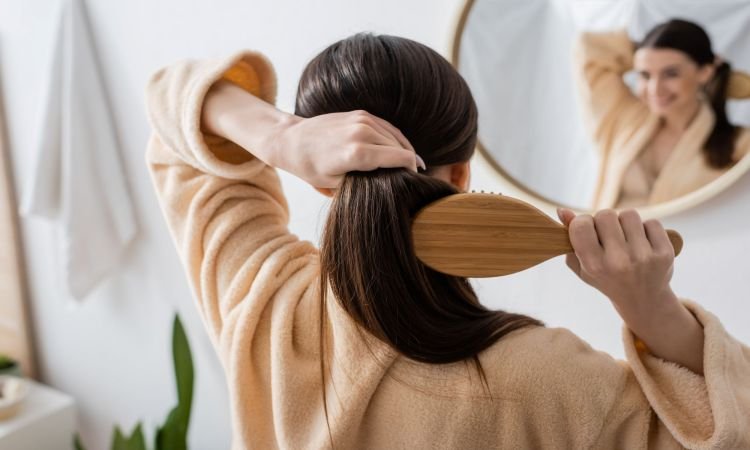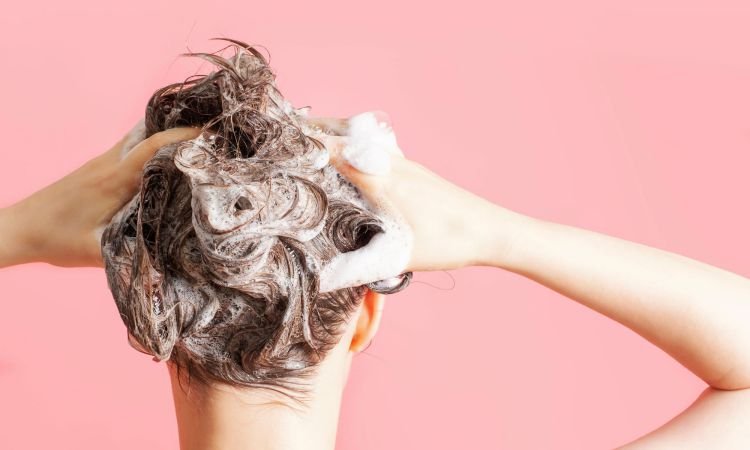 If you’ve been the type who rushes through washing and shampooing your hair, then it’s time to take things to the next level. Like your face, your hair deserves some TLC. A hair care regimen and the products used are crucial elements for healthy hair.
If you’ve been the type who rushes through washing and shampooing your hair, then it’s time to take things to the next level. Like your face, your hair deserves some TLC. A hair care regimen and the products used are crucial elements for healthy hair.
When you come to think of it, your hair goes through the same beating and exposure to the sun and outdoor elements in like manner as your skin does. So it’s only fitting that you shower your tresses with the same amount of love. Long or short, straight or curly—it doesn’t matter. The right routine and products can do wonders in keeping your hair at its best.
Here are insider secrets from the TTB Blog on establishing a hair care routine that suits your mane.
1. Determine What Your Hair Type Is
There are several types of hair, including straight, wavy, curly, and coily or kinky hair. Each of these types has different characteristics that require different care techniques. Determining your hair type can be a bit tricky, but it is important in order to properly care for and style it. Here are some of the factors to consider:
-
Density.
This refers to how much hair you have. Take a handful of hair from the front of your head and take it to the side. If you see a lot of scalp skin, you have thin density. You’ve got thick hair if you can barely see your scalp.
-
Diameter.
Take one hair strand and place it between your fingertips. If you don’t feel anything, that’s a sign of fine hair. If you feel the single strand, you have medium, and if the feel is textured and thick, your hair is most likely coarse.
-
Porosity.
This refers to how well your hair can absorb moisture and product. A good test is to fill a bowl with water and then place a single strand of hair. If your strand sinks to the bottom, this means your hair can absorb all the moisture and has high porosity. Conversely, if the strand of hair floats above the water surface, your hair has low porosity.
The tests above are quite easy to do by yourself. However, if you’re still confused about the answer, ask your go-to stylist. They will, without a doubt, be able to give you a precise answer, all thanks to their hair care expertise.
2. Consider Your Hair Color
People with natural hair are free to follow their regular hair care routine as they wish. However, if your hair has come in contact with dye, bleach, and other chemicals, you may have to think extra hard about your hair care routine.
Bleached hair requires extra nourishment to stop it from drying up. Hair masks and conditioners help. But it’s not advisable to wash it every day so as to prevent premature color fading and dryness.
3. Assess The Exposure Level
A non-negotiable step in any hair care routine is to give it a good cleansing. In fact, after determining your hair type and it’s additional needs, the first step once you’ve established what routine works and what doesn’t is to cleanse your hair. However, how often you wash your hair depends on factors like how dry or oily it is and what products you’ve used for the day.
For example, if you’ve merely stayed home and washed your hair in the morning, there’s no pressing need to clean it at night. On the other hand, those who were out and about and applied layer upon layer of styling products can surely benefit from a good cleansing by the end of the day.
4. Note The Humidity
Those living in hot, humid, and tropical countries often can’t stand not washing their hair daily. This is because the humidity increases your likelihood of sweating midday, making your hair feel oily, sticky, and greasy.
 Those in colder climates, however, can make do with a thrice-a-week washing schedule. Shampooing your hair every day is harmful to your hair, no matter how well-rated that particular product is. Overdoing it can strip your hair of its natural oils, killing it faster.
Those in colder climates, however, can make do with a thrice-a-week washing schedule. Shampooing your hair every day is harmful to your hair, no matter how well-rated that particular product is. Overdoing it can strip your hair of its natural oils, killing it faster.
When you wash your hair, opt for a sulfate-free shampoo. Sulfate causes frizz, making your strands even more challenging to manage. On days when you skip your shower, dry shampoo will be your best friend to keep the oiliness at bay.
Final Thoughts
Finding the proper hair care routine for you can be daunting, especially with the range of information readily available online and even more products tempting you to purchase them. Such can be helpful but only if you know what you want. Otherwise, you’ll be left dazed on what to do, and next thing you know, you’ve spent so much on products for a hair care routine that doesn’t suit you. Take time to experiment; buy only sample-sized products. And when you’ve finally found what works, stick to that.




